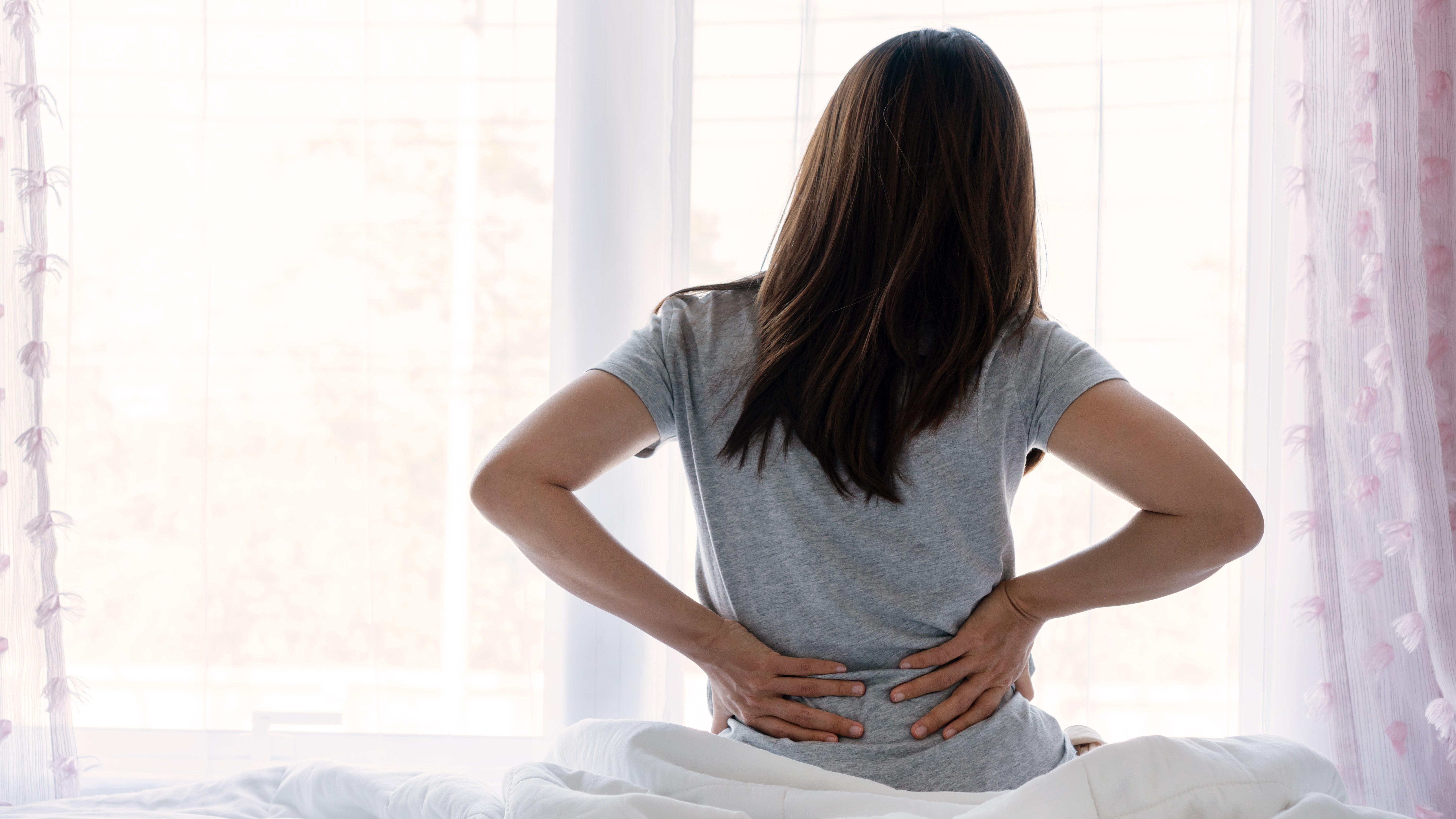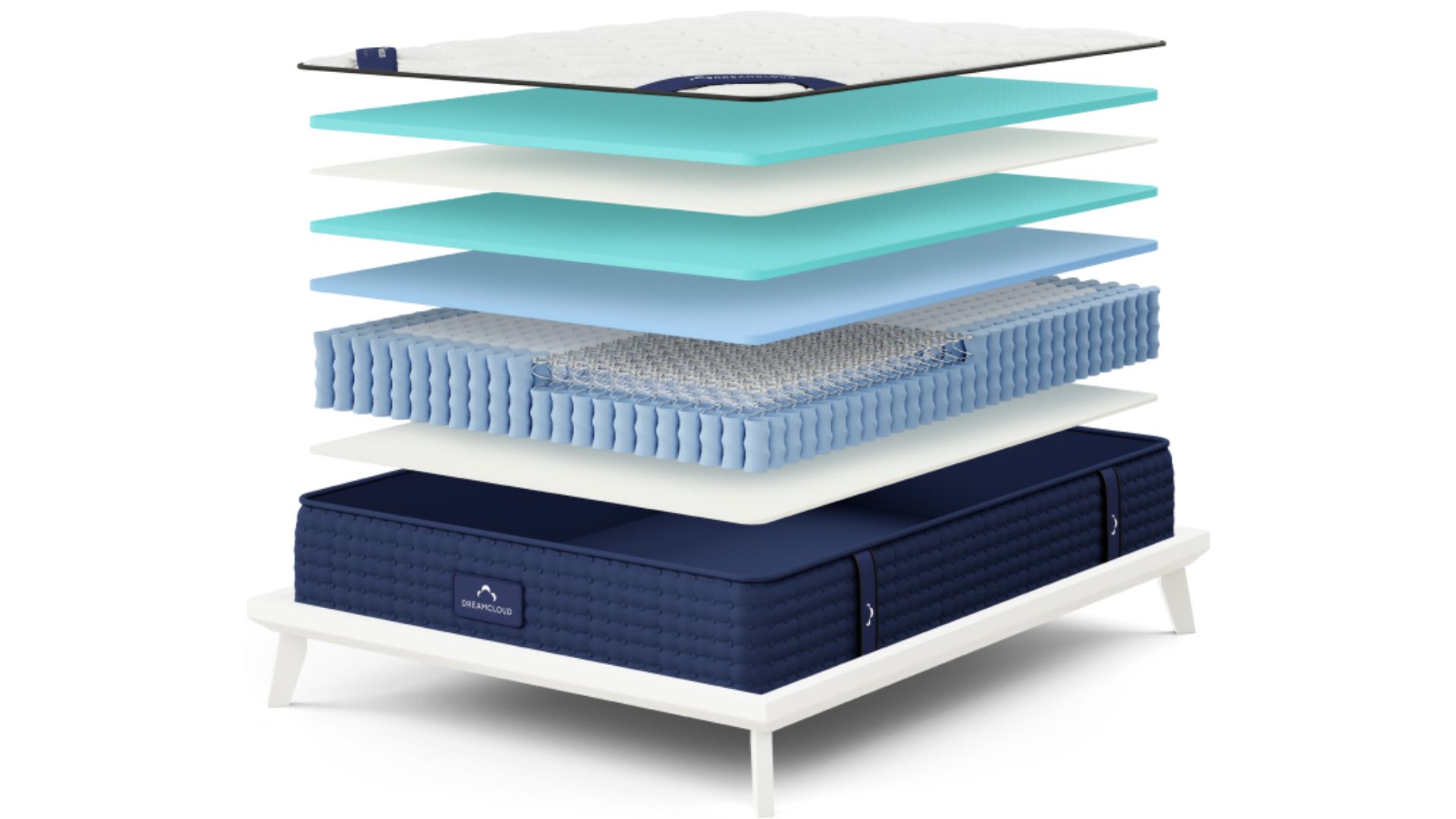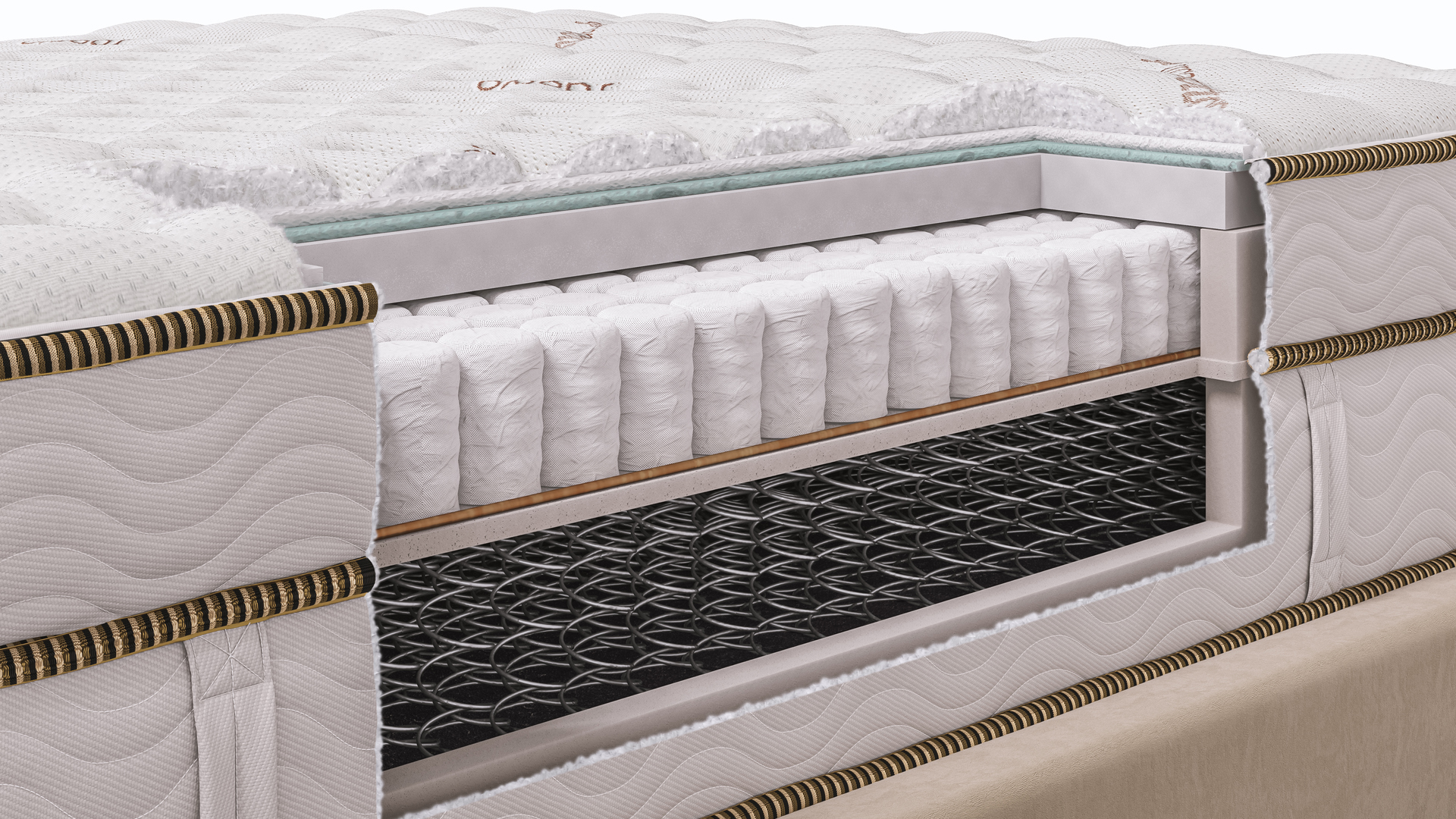Are hybrid mattresses good for back pain?
Why foam and coil mattresses are a good choice for people with back pain

It’s estimated that up to 80% of American adults will experience back pain at some point in their lives. And one of the things that can exacerbate or cause back pain is sleeping on the wrong mattress. As someone who experiences back pain, I’m a big fan of hybrid mattresses for helping to ease aches and pains but is this the right choice for you?
You’ll find multiple hybrid mattresses in our guide to the best mattresses for all sleepers, with the combination of coils and foams being ideal for support and comfort. But are hybrid mattresses actually the best choice if you’re experiencing back pain?
As a sleep writer and mattress tester, I’ve slept on a huge variety of hybrids, including many of the best mattresses for back pain. Read on to find out more about hybrid mattresses and what features make them a great choice for those with back pain.
What is a hybrid mattress?
A hybrid mattress is one that consists of both foams and coil layers. The coil or multiple coil layers are topped by layers of foam, which can consist of memory foam, latex, polyfoam or cooling foams to name a few. This combination creates a perfect mixture of sturdy support from the coils, along with plenty of pressure relieving comfort from the foam.
Some of this year's best hybrid mattresses also have a pillow top for extra comfort but will generally otherwise have a soft top cover to keep sleepers cool and comfortable. Most modern hybrid mattresses tend to use individually wrapped coils for better airflow and motion isolation, but you will still find some that use an innerspring design. Hybrid mattresses also come in a range of firmness options from soft to firm, with the choice of foams dictating how much sinkage and contouring you’ll get.

Are hybrid mattresses good for back pain?
Hybrid mattresses are extremely popular, with many brands focusing entirely on this style of bed. But what makes them so good for helping with back pain and what should you look out for? Here are the three key features to keep an eye out for.
1. Lumbar support
When you’re looking for a mattress to help with back pain, the most important thing is to ensure that your spine is supported around the lumbar region and that there’s no cave-in under your spine.
Sign up to get the BEST of Tom's Guide direct to your inbox.
Get instant access to breaking news, the hottest reviews, great deals and helpful tips.
If your spine falls out of alignment, you’re likely to start experiencing aches and pains. A mattress with good lumbar support will help to maintain the natural curve of your spine, filling in the gap between your lower back and its surface.
Hybrid mattresses offer good lumbar support because of their coil layer. This provides firm support but will also move and adjust with your body to provide more targeted support where needed.

This is often backed up by specialist foams designed to promote spinal alignment, with some hybrid mattresses also having enhanced lumbar support, such as reinforced springs, a strip of foam and / or specialised quilting in the centre third of the mattress.
One example is the Saatva Classic which has a Lumbar Zone in the centre third of the mattress made up of 884 individually wrapped durable steel coils. Read our full Saatva Classic mattress review to find out more.
2. Pressure relief
Contouring foams at the top of hybrid mattresses help to provide a layer of cushioning to sleepers. This is vital to avoid the build-up of pressure points at the hips, knees, shoulders and lumbar region. A lack of pressure relief is often the cause of back pain – if your body isn’t adequately cushioned as we sleep, aches and pains will build up at pressure point areas and radiate through the spine, causing back issues.
Remember that the amount of pressure relief you will need will vary according to sleeping position. Side sleepers will need a thicker layer of cushioning for hips and shoulders, whilst back sleepers need to support the lumbar region. Stomach sleepers will need firmer support around the hips to keep them elevated and prevent pressure points from building up if they sink too far into the mattress.
3. Temperature regulation
Overheating at night may not seem like an obvious cause of back pain, but being too hot at night can lead to restless sleep. And, in turn, restless sleep can cause and exacerbate back pain. If you’re too hot at night, you’ll be tossing and turning far more than you would be in normal sleep. And this doesn’t help to maintain adequate lumbar support or pressure relief.
Hybrid mattresses are far better at regulating temperature than all-foam beds, as the coil layer promotes airflow and stops heat from becoming trapped in the mattress. In fact, many cooling mattresses have a hybrid design, as well as using specialist cooling materials in the top layers of foam. If you are a hot sleeper, it’s vital to ensure you choose a mattress that will help keep you comfortable at night.

What type of mattress is best for back pain?
Broadly speaking, mattresses that are suitable for people with back pain usually have a medium firm to firm feel. Hybrid mattresses often feature highly when it comes to helpful beds for back pain, with the layers of foam and coils providing enough cushioning and support to keep most sleepers comfortable, but some of memory foam mattresses can also provide relief from back pain.
Those with lower back pain will probably find a firm mattress beneficial but for those with aches and pains across the back, a softer medium firm mattress might be a better fit.
Body type also plays a part, as the mattress needs to provide the correct level of support to keep the spine aligned, along with enough cushioning to prevent pressure build up at the hips and shoulders. Heavier sleepers and those who sleep on their stomach will need a firmer mattress to keep the spine aligned and hips raised, while lightweight and side sleepers need more cushioning to prevent pressure points building up. Remember, firmness is subjective, which is why choosing a mattress with a trial period is so important.

Jo Plumridge is an experienced mattress reviewer with several years' experience covering all things mattresses and sleep, and who tests memory foam, hybrid and organic mattresses. What Jo doesn't know about a boxed mattress isn't worth knowing, so naturally we tasked her with producing a series of features for Tom's Guide looking at all aspects of mattresses, from how to pick between latex and memory foam (it's a tricky one), to the seven mistakes people make when buying a mattress for the first time. When testing the DreamCloud Luxury Hybrid for Tom's Guide, Jo said: "I loved the back support and pressure relief it offered. Plus, it looks far more expensive than it is." When she isn’t writing about sleep, Jo also writes extensively on interior design, home products and photography.
